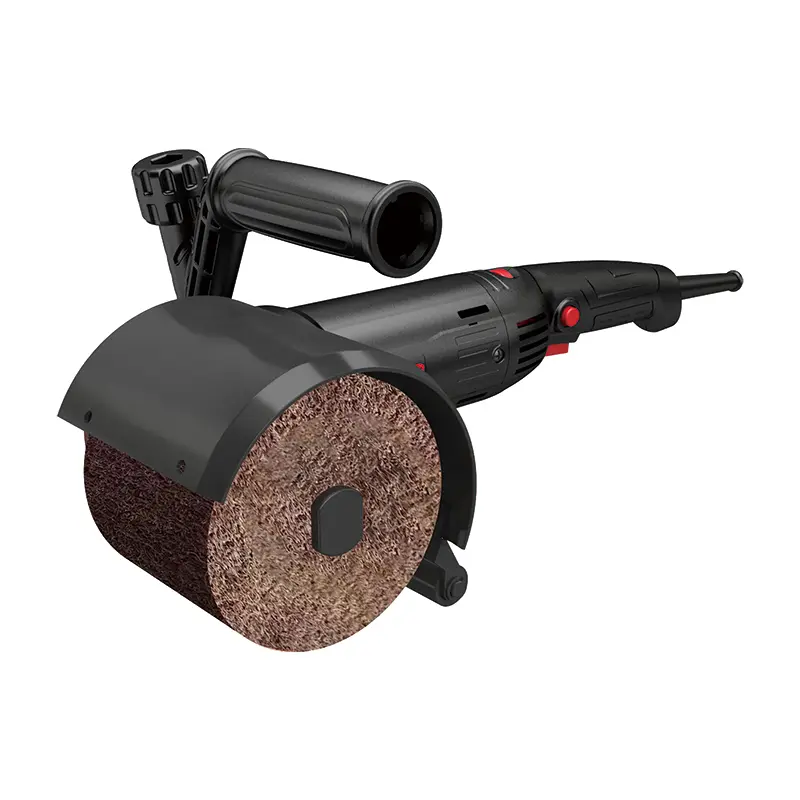In the production process of wire drawing machines, the material selection of rollers plays a crucial role in enhancing production efficiency, reducing production costs and improving product quality. This article will delve into three common materials for wire drawing machine rollers: tungsten steel, tungsten carbide, and ceramic coating. It will analyze their characteristics, application scenarios, and advantages and disadvantages to help you select the most suitable roller material.
First, tungsten steel
(1) Characteristics
Tungsten steel is a high-performance alloy material, featuring high hardness, high strength and excellent wear resistance. Its hardness can usually reach above HRC60, effectively resisting the high stress and wear generated during the wire drawing process.
(2) Application scenarios
Tungsten steel rollers are suitable for drawing high-hardness and high-strength metal wires, such as tungsten wire and stainless steel wire. Due to its high hardness and wear resistance, tungsten steel rollers can maintain a long service life under high loads.
(3) Advantages and Disadvantages
Advantages: High hardness and wear resistance, long service life, suitable for high-load production.
Disadvantages: High cost, difficult processing, and high requirements for processing accuracy.
Second, tungsten carbide
(1) Characteristics
Tungsten carbide is a material with extremely high hardness, which can reach over HRC70, far exceeding that of ordinary steel. Through the thermal spraying process, the tungsten carbide coating can be evenly covered on the surface of the roller, significantly improving the wear resistance and impact resistance of the roller.
(2) Application scenarios
Tungsten carbide coated rollers are suitable for drawing various metal wires, especially in scenarios where high wear resistance is required. Its high hardness and wear resistance can effectively reduce the wear of the rollers and extend their service life.
(3) Advantages and Disadvantages
Advantages: High hardness, good wear resistance, long service life, and relatively low cost.
Disadvantages: The coating process is complex, with high requirements for coating quality and limited coating thickness, which may affect the final dimensional accuracy of the roller.
Third, ceramic coating
(1) Characteristics
Ceramic coatings feature extremely high hardness and wear resistance, as well as excellent corrosion resistance and thermal shock resistance. The hardness of ceramic coatings can reach above HRC75, which is much higher than that of ordinary steel. In addition, the ceramic coating also features a low coefficient of friction and self-lubrication, which can effectively reduce scratches on the surface of the wire.
(2) Application scenarios
Ceramic-coated rollers are suitable for drawing metal wires with high precision and quality requirements, such as stainless steel wires and copper wires. Its low coefficient of friction and self-lubricating property can effectively reduce scratches on the surface of the wire and improve the surface quality of the wire.
(3) Advantages and Disadvantages
Advantages: High hardness, good wear resistance, long service life, low friction coefficient, and reduced surface scratches on the wire.
Disadvantages: The coating process is complex, the cost is high, the quality requirements for the coating are strict, the ceramic coating is fragile, and good heat insulation measures are needed.
Fourth, comprehensive comparison
(1) Hardness and wear resistance
Tungsten steel: It has high hardness and good wear resistance, making it suitable for high-load production.
Tungsten carbide: It has extremely high hardness, good wear resistance, long service life and relatively low cost.
Ceramic coating: It has the highest hardness, the best wear resistance, a long service life, a low coefficient of friction, and reduces surface scratches on the wire.
(2) Cost
Tungsten steel: It has a relatively high cost and is difficult to process.
Tungsten carbide: Relatively low cost, but the coating process is complex.
Ceramic coating: It has a relatively high cost, a complex coating process, and requires good heat insulation measures.
(3) Application Scenarios
Tungsten steel: It is suitable for drawing metal wires with high hardness and strength, such as tungsten wire and stainless steel wire.
Tungsten carbide: It is suitable for drawing various metal wires, especially in scenarios where high wear resistance is required.
Ceramic coating: Suitable for drawing metal wires with high precision and quality requirements, such as stainless steel wire, copper wire, etc.

When choosing the material for the roller of a wire drawing machine, it is necessary to comprehensively consider production requirements, cost budget and application scenarios. Tungsten steel rollers, with their high hardness and wear resistance, are suitable for high-load production. Tungsten carbide coated rollers have high hardness, good wear resistance and relatively low cost, making them suitable for scenarios with high wear resistance requirements. Ceramic-coated rollers have the highest hardness, the best wear resistance, a long service life, a low coefficient of friction, and reduce surface scratches on the wire. They are suitable for drawing metal wires with high precision and quality requirements.
It is hoped that the above content can help you better choose the suitable material for the wire drawing machine roller. If you have any questions about the material of the wire drawing machine roller or need further information, please feel free to contact us at any time.
Post time: Apr-30-2025
